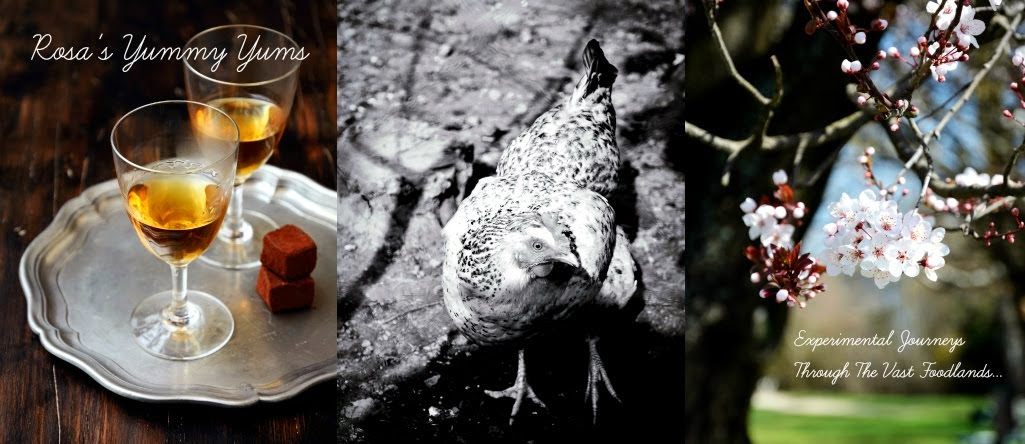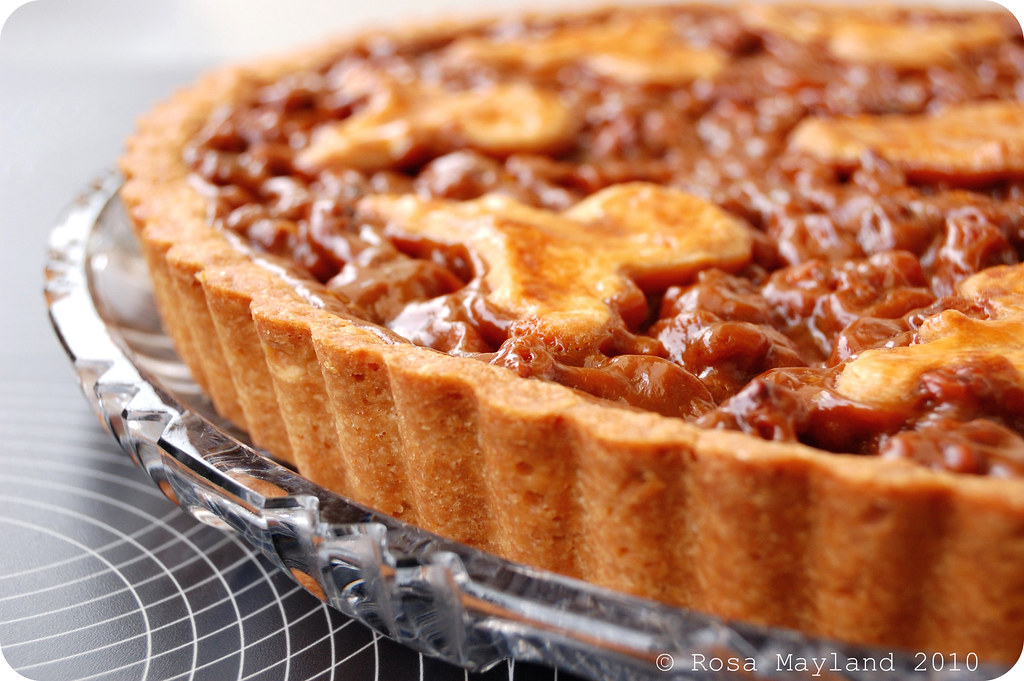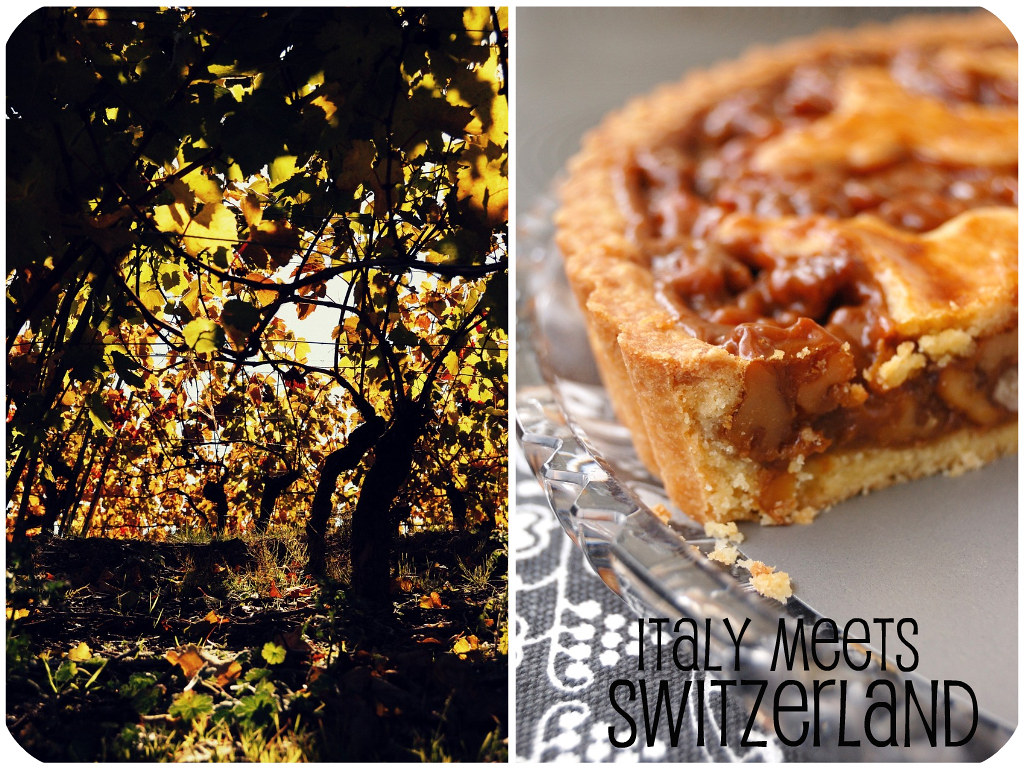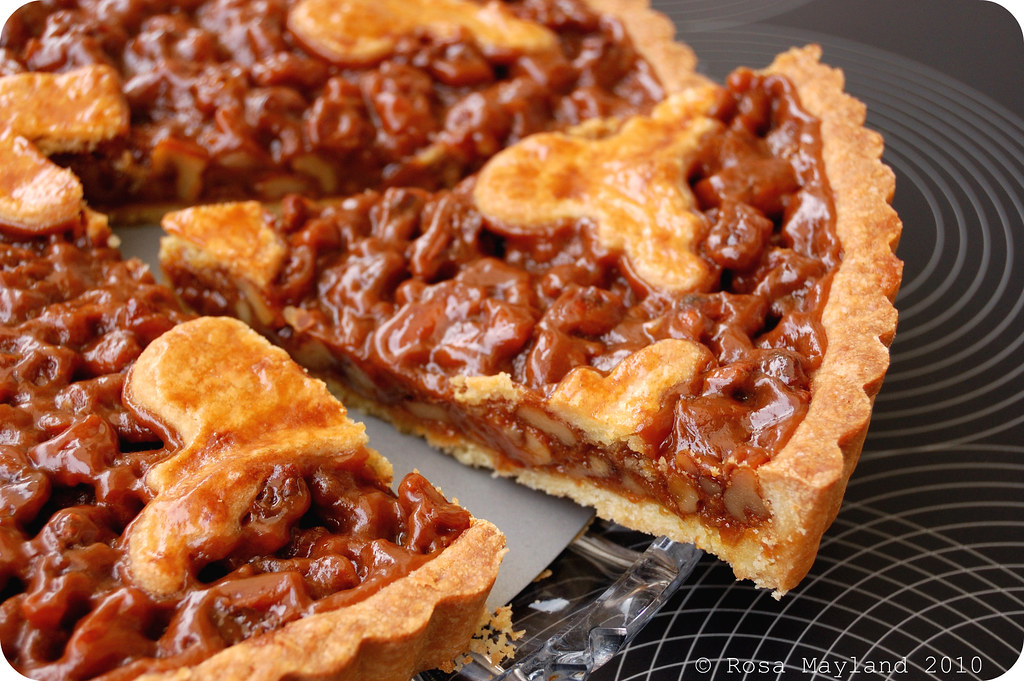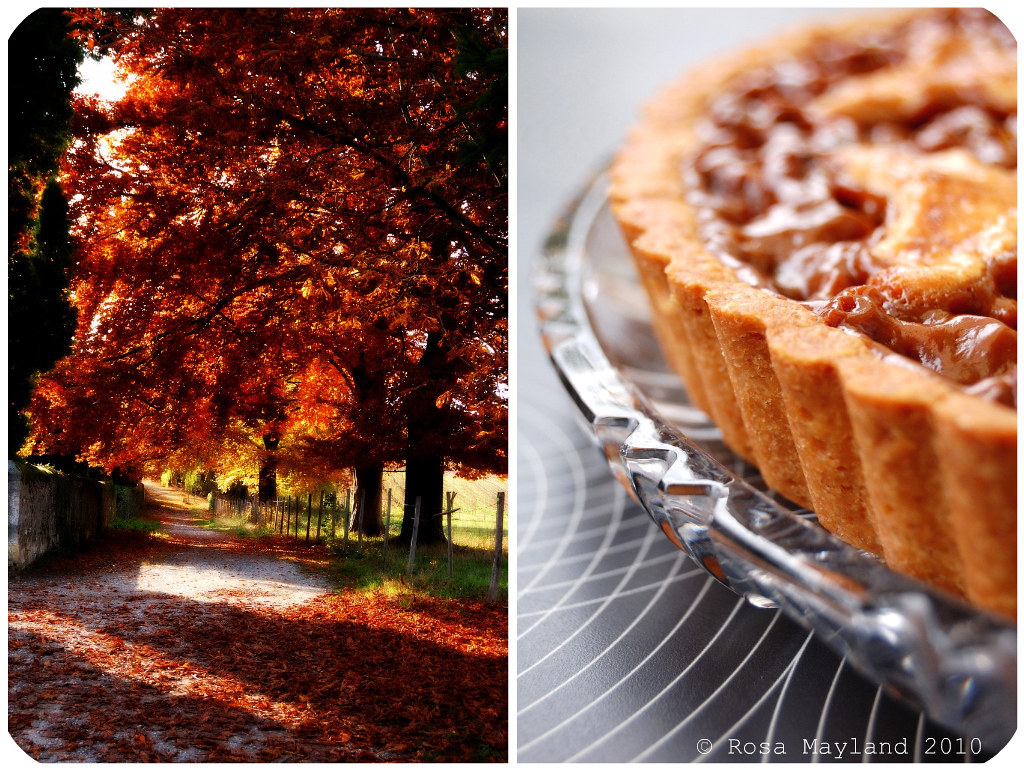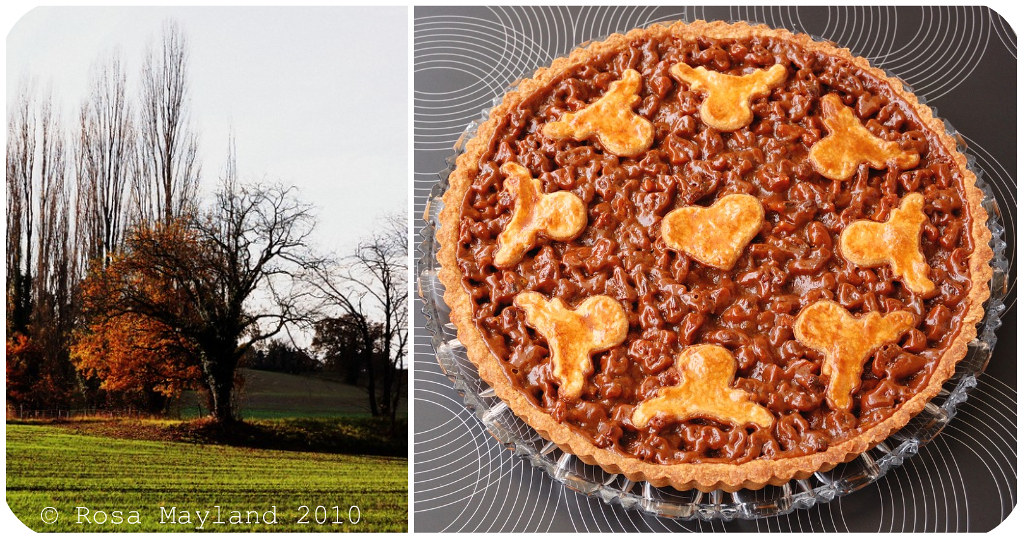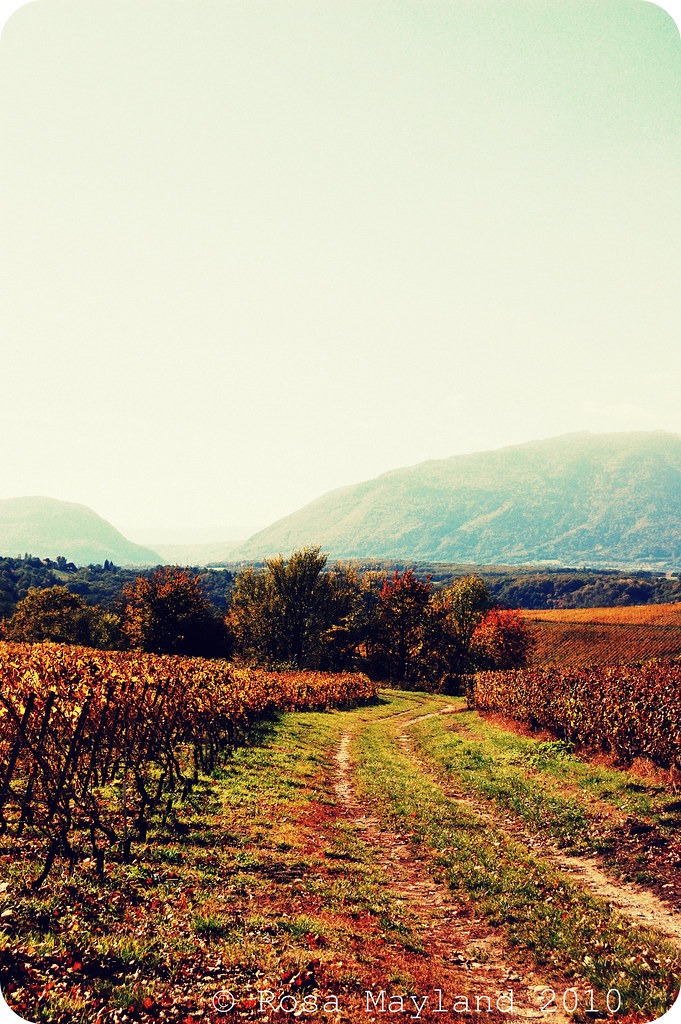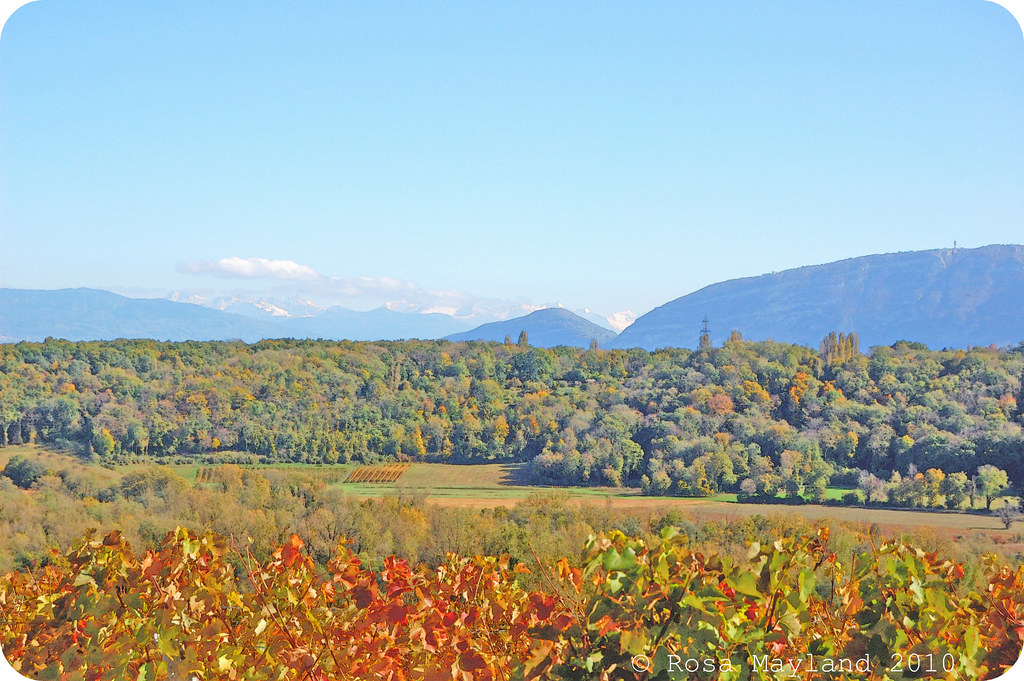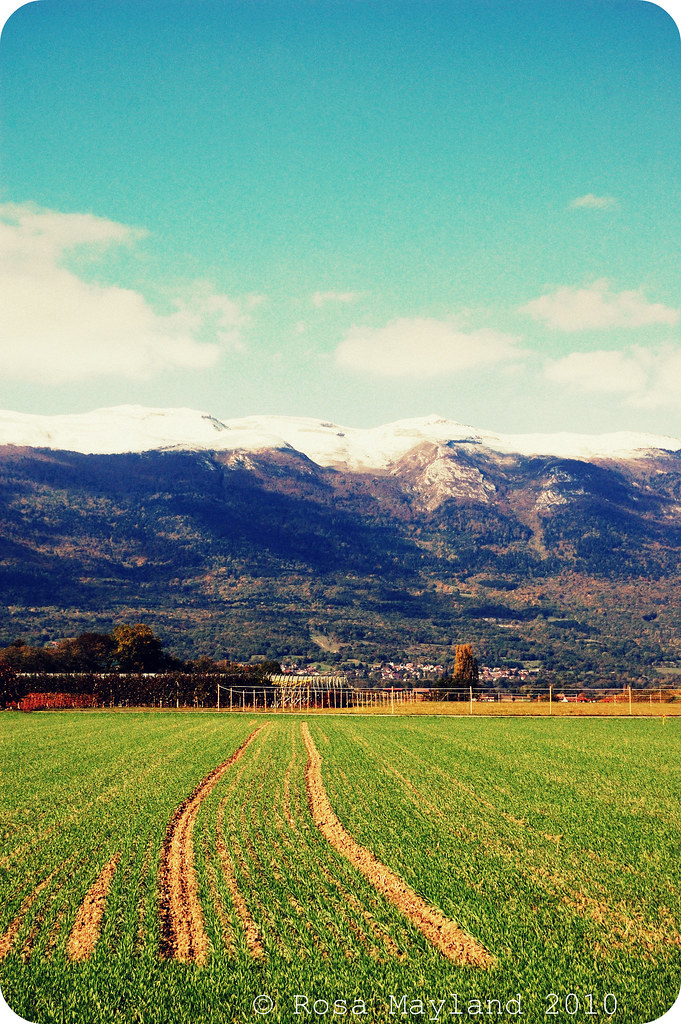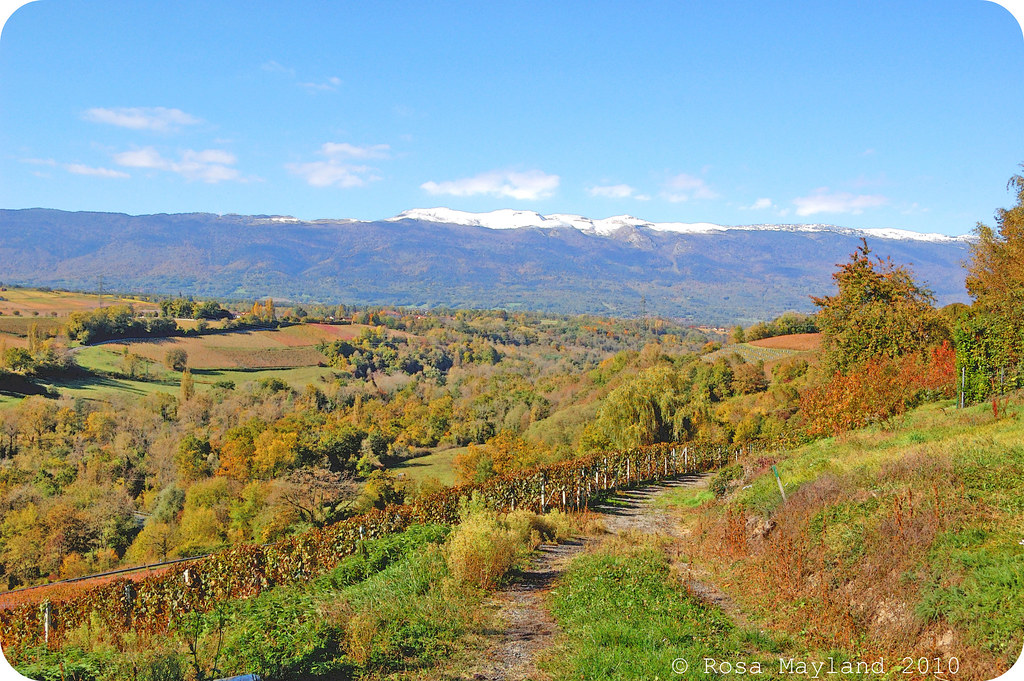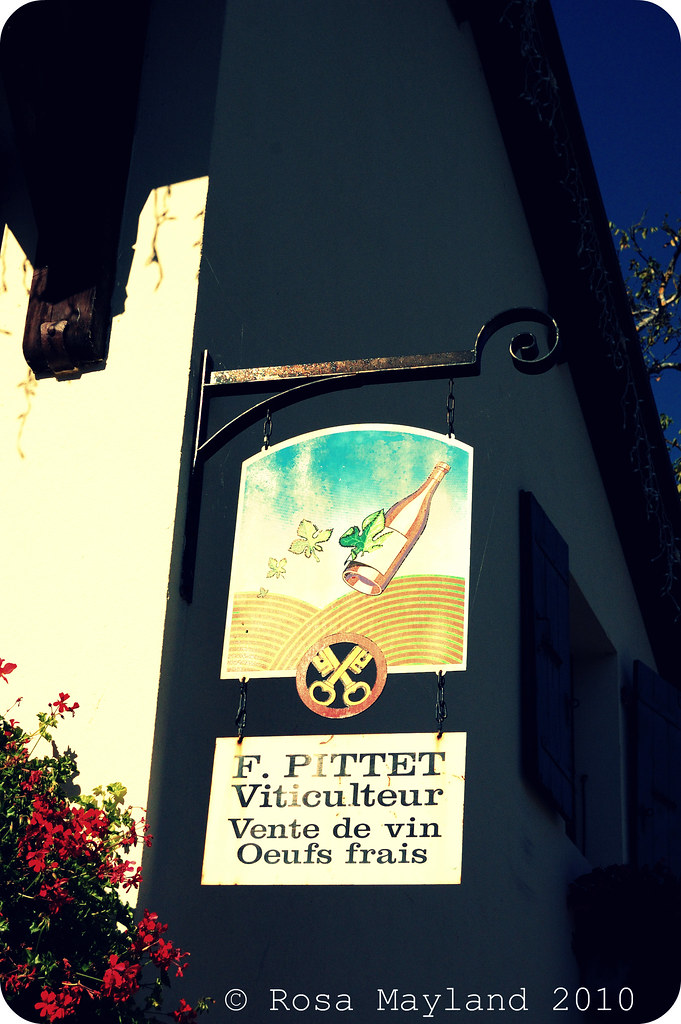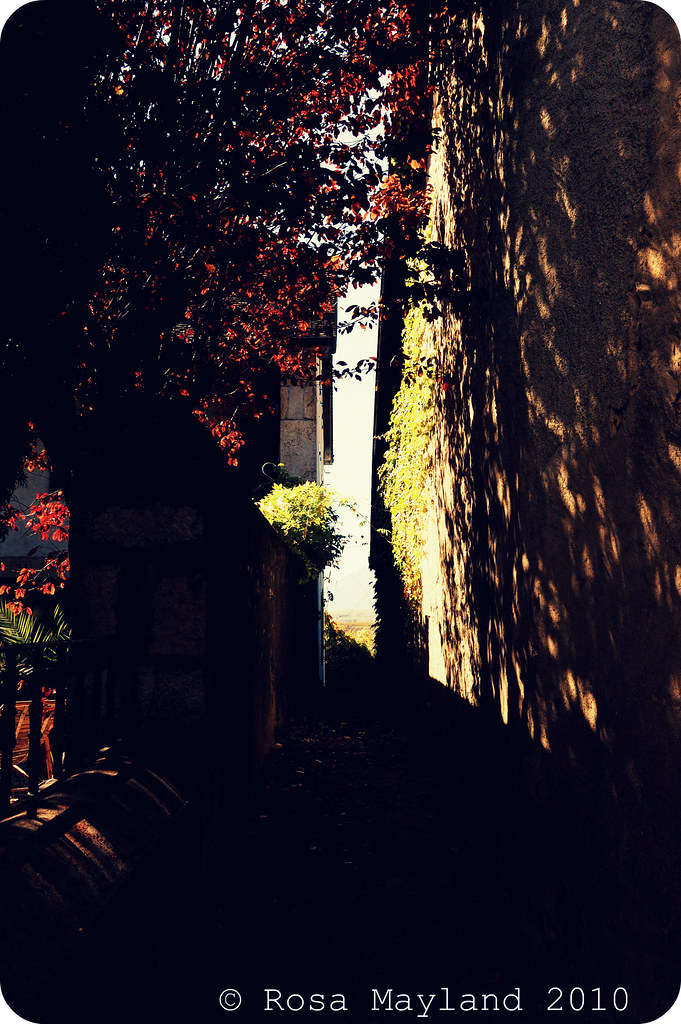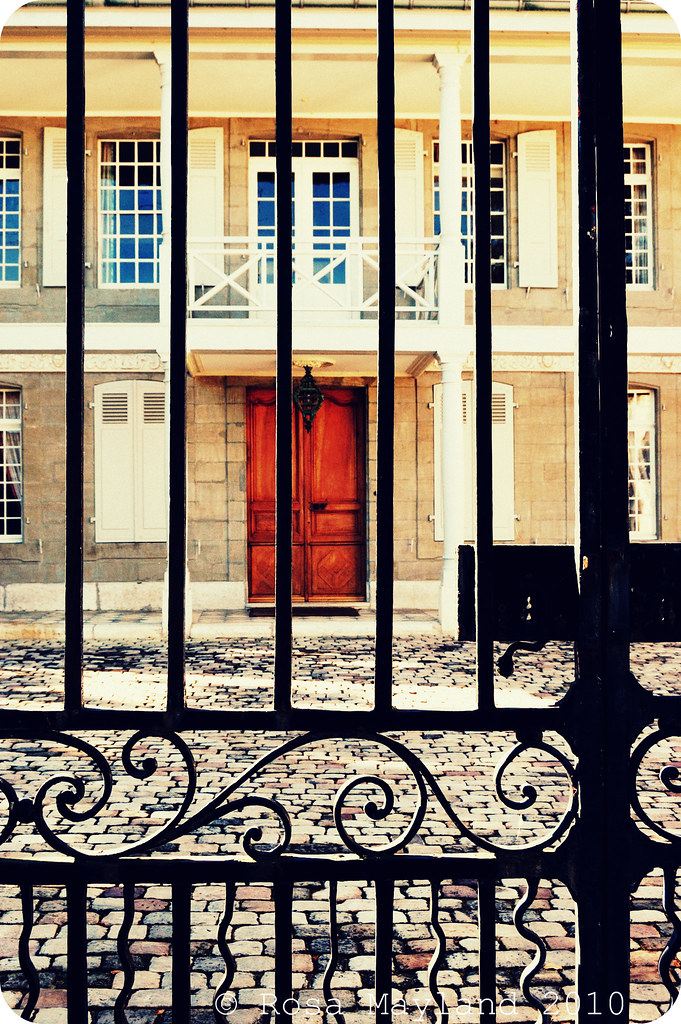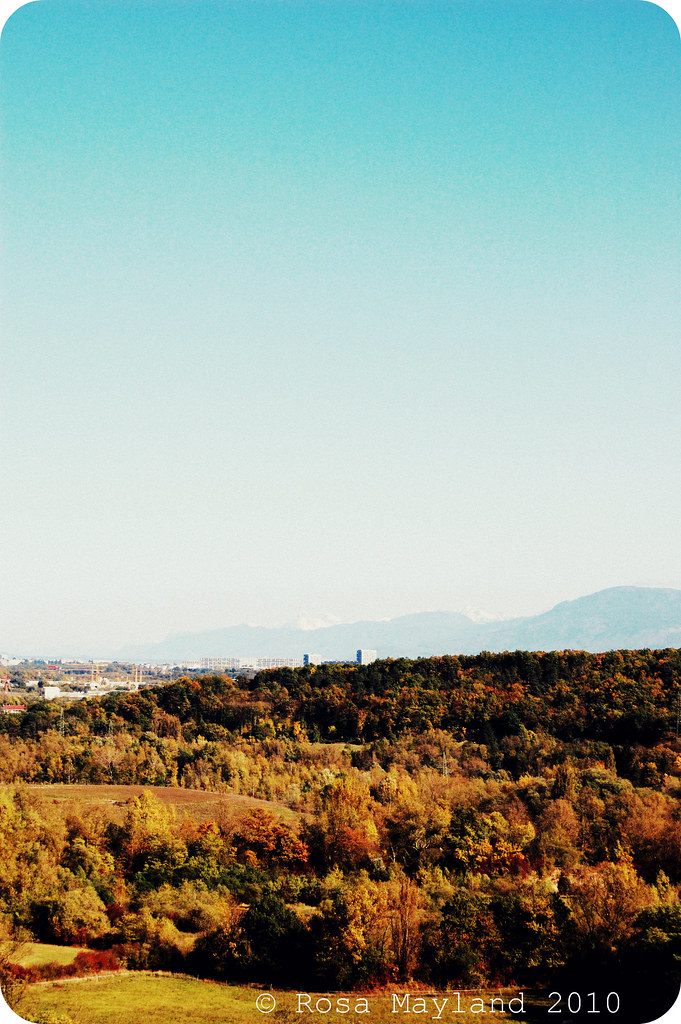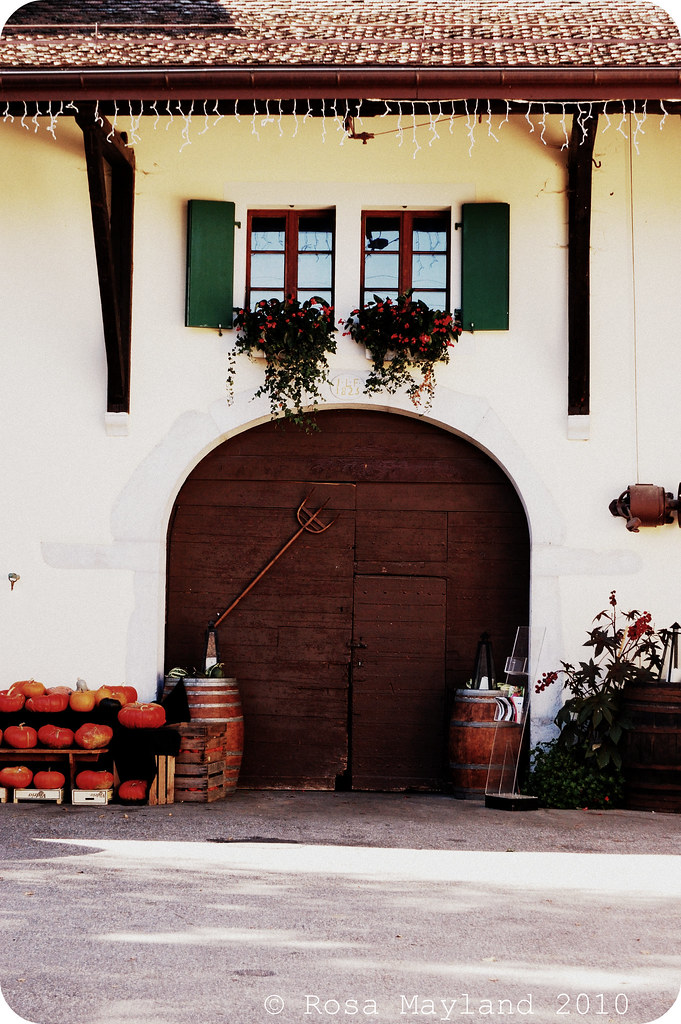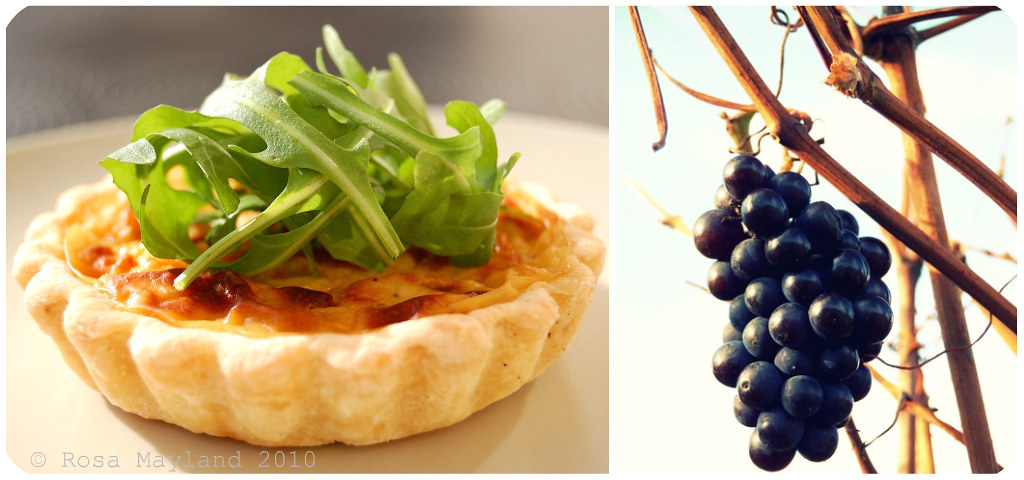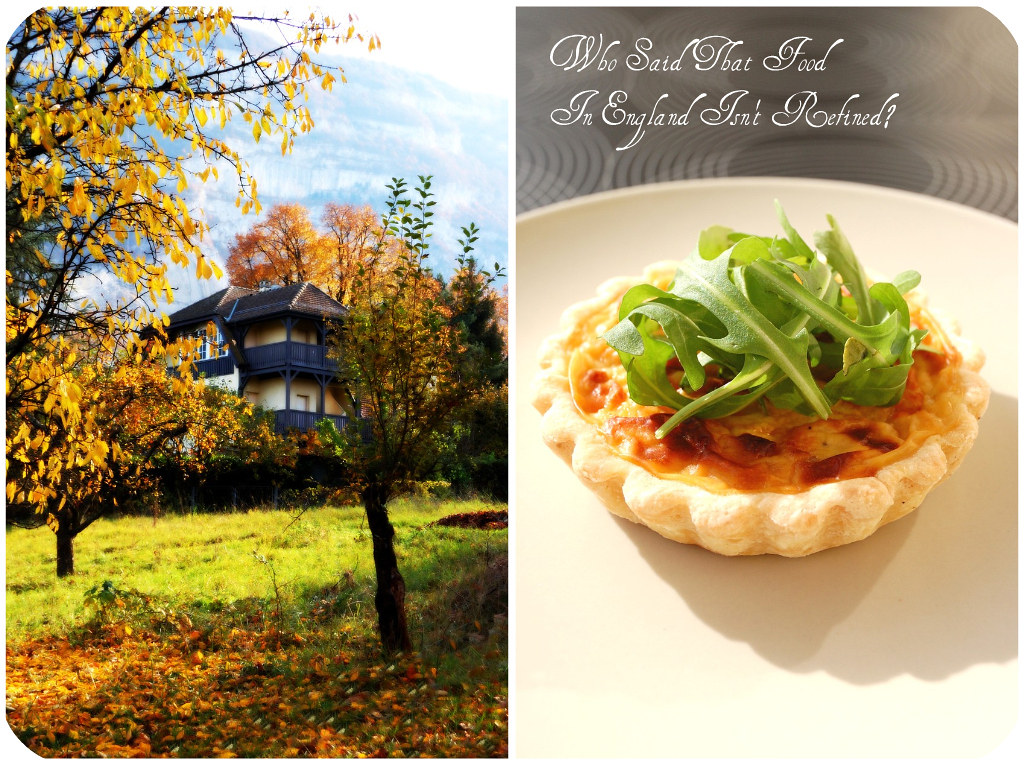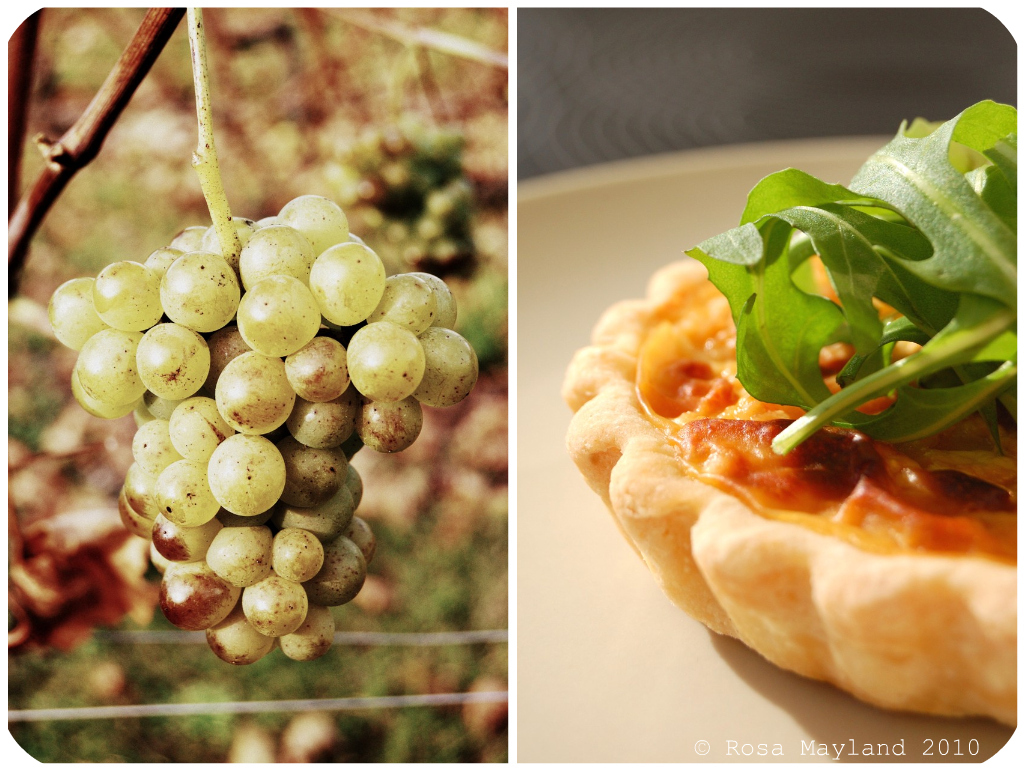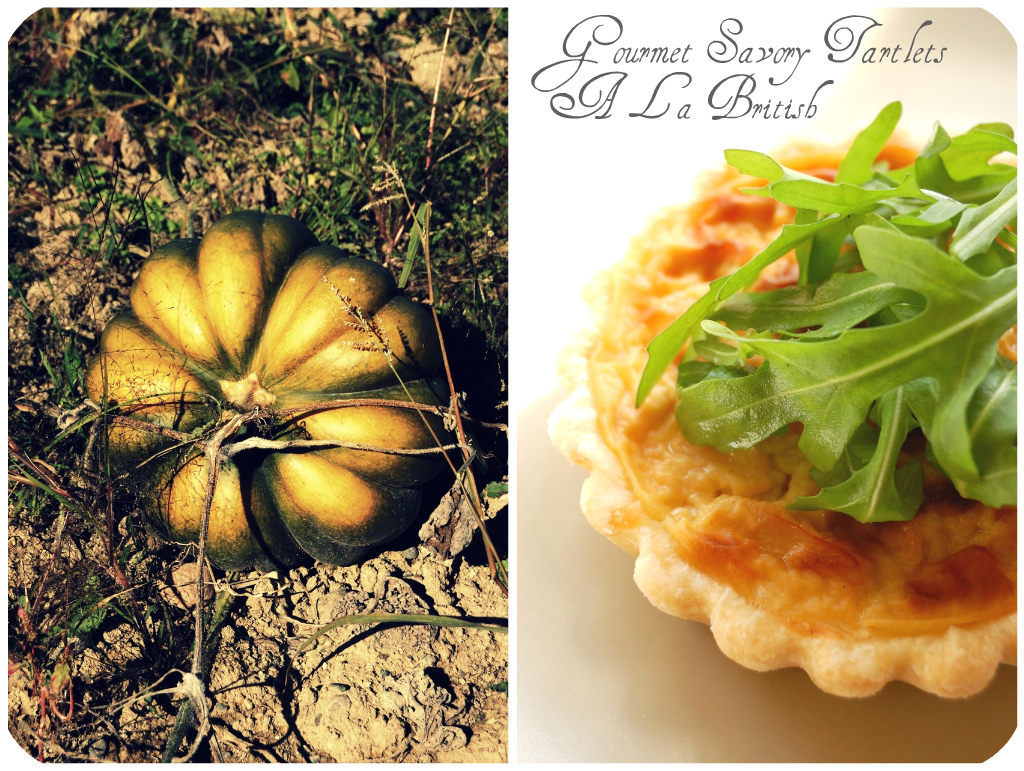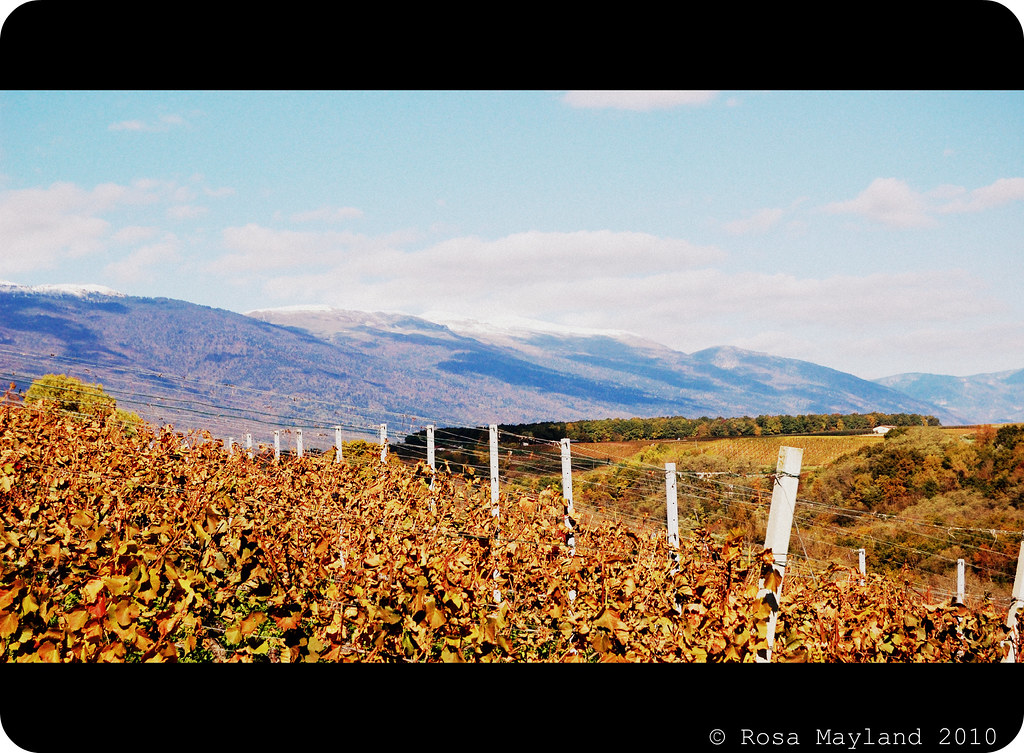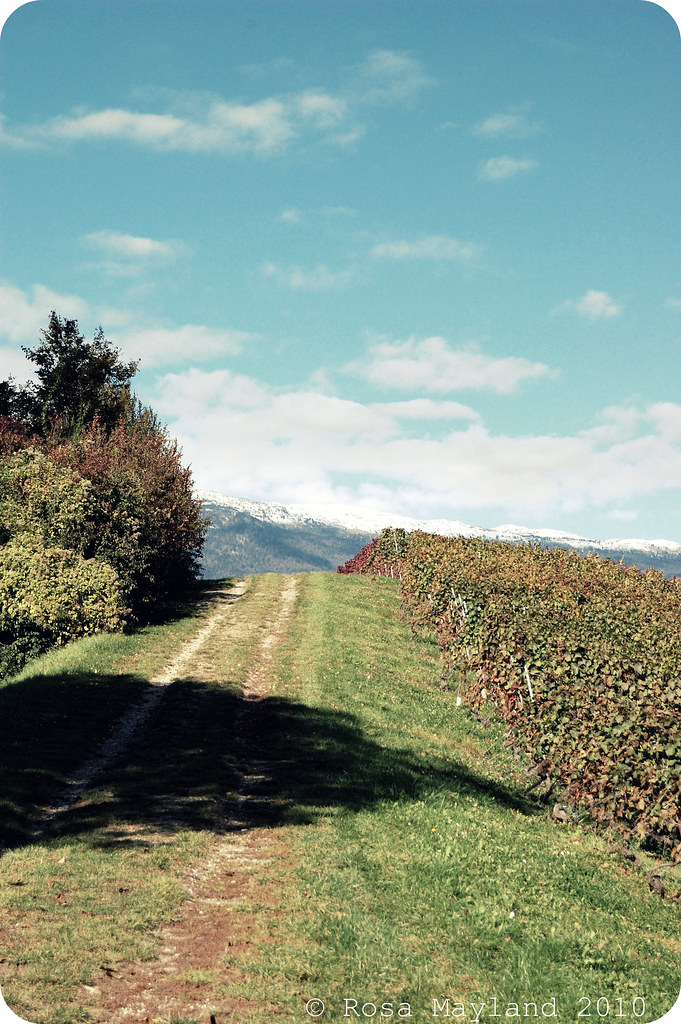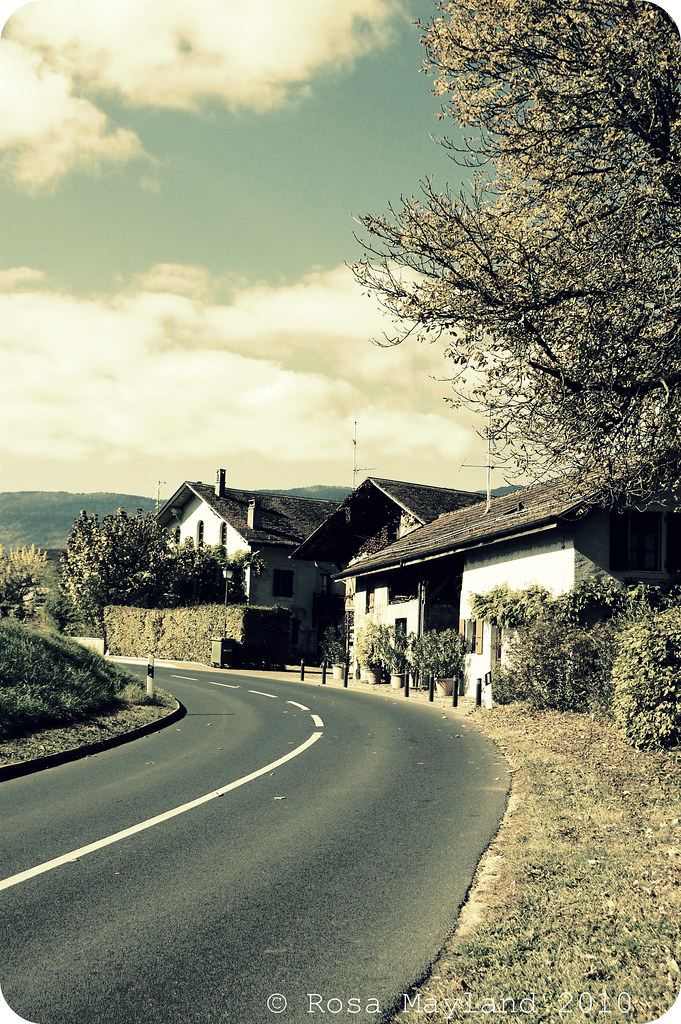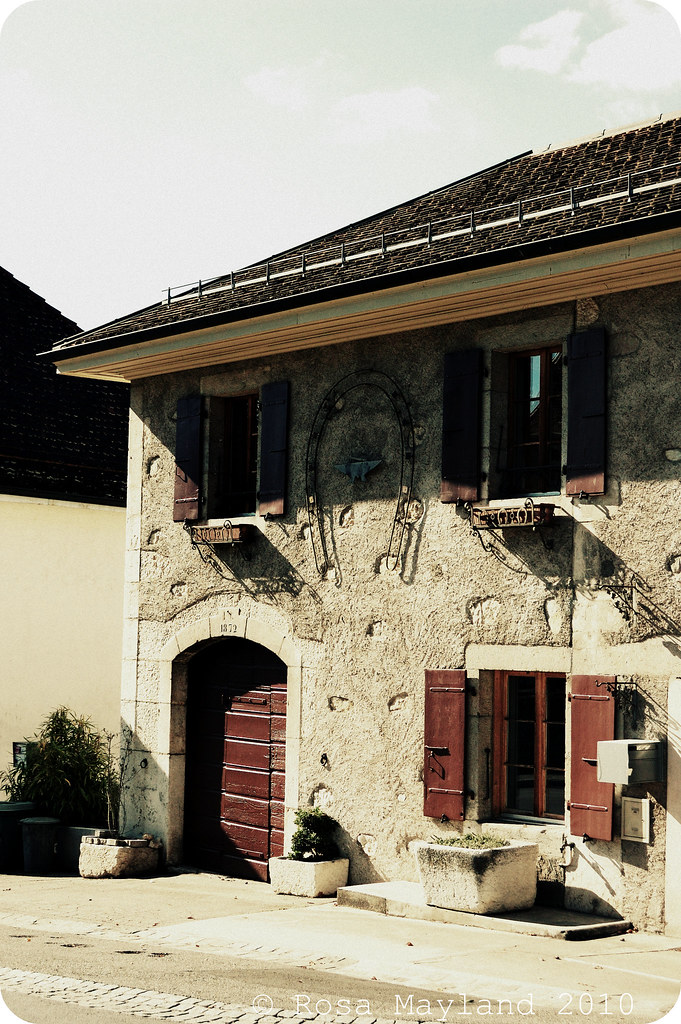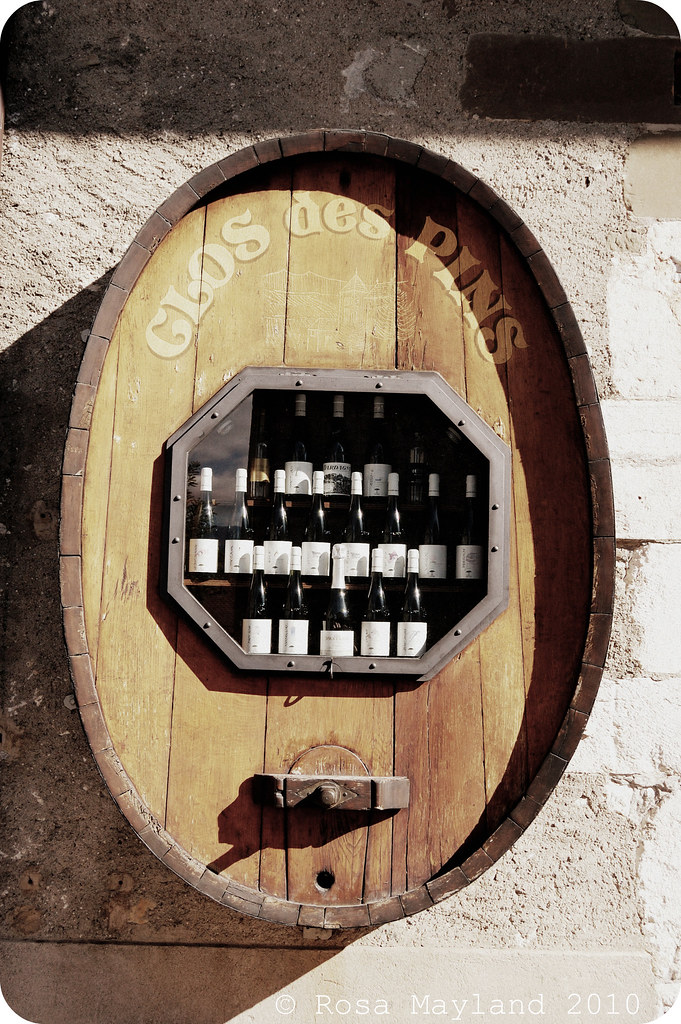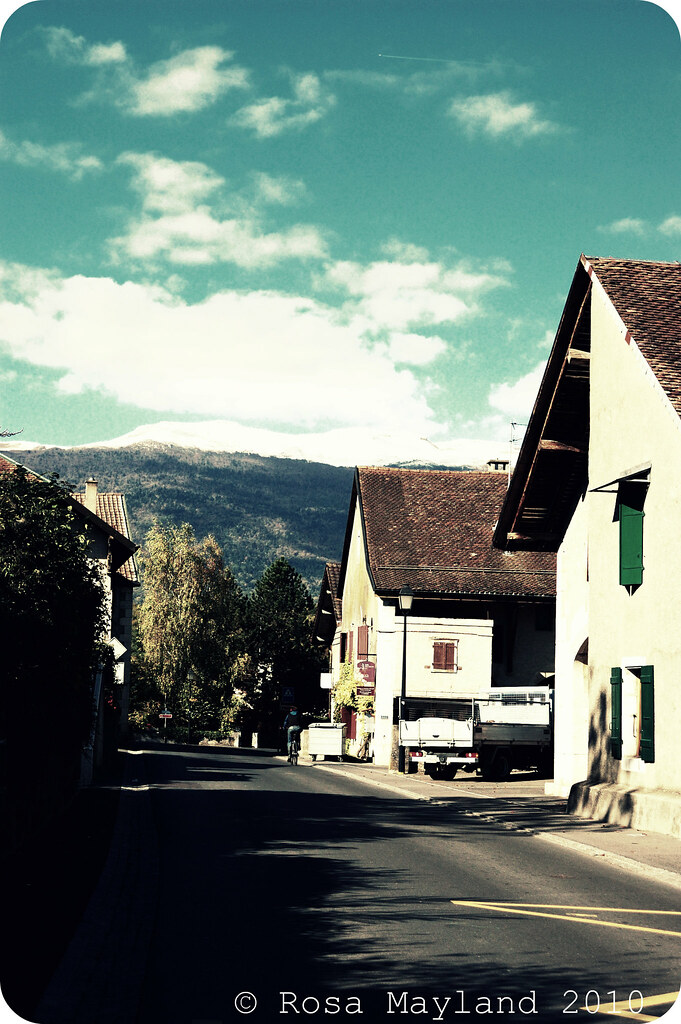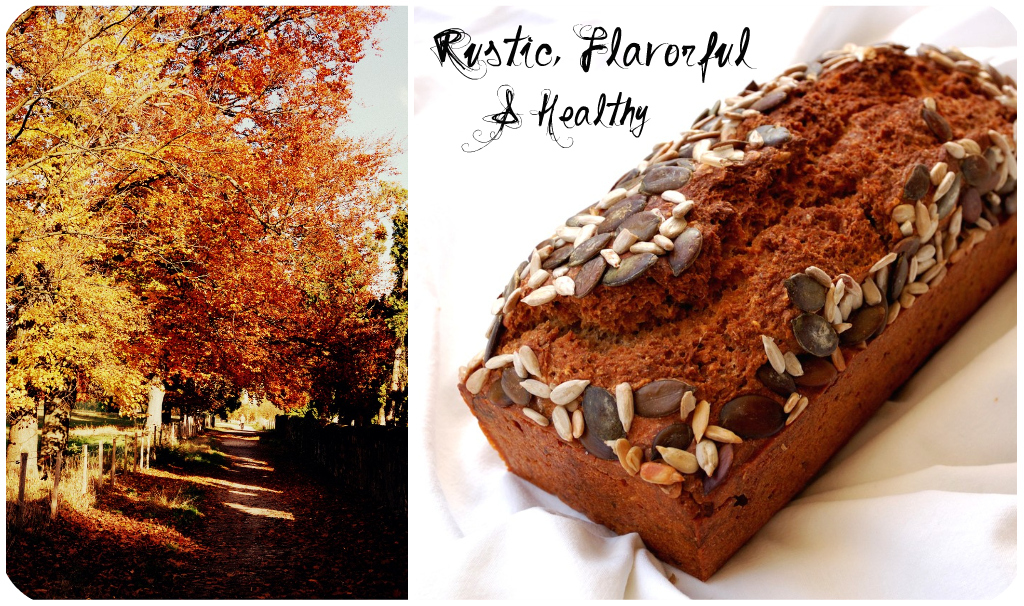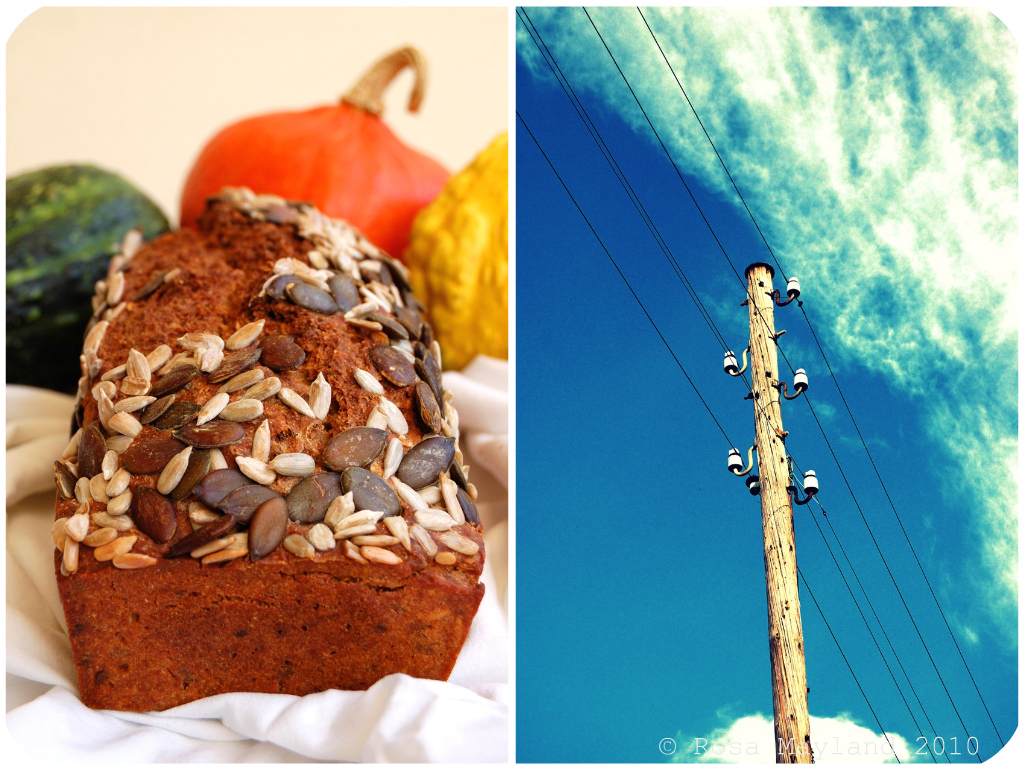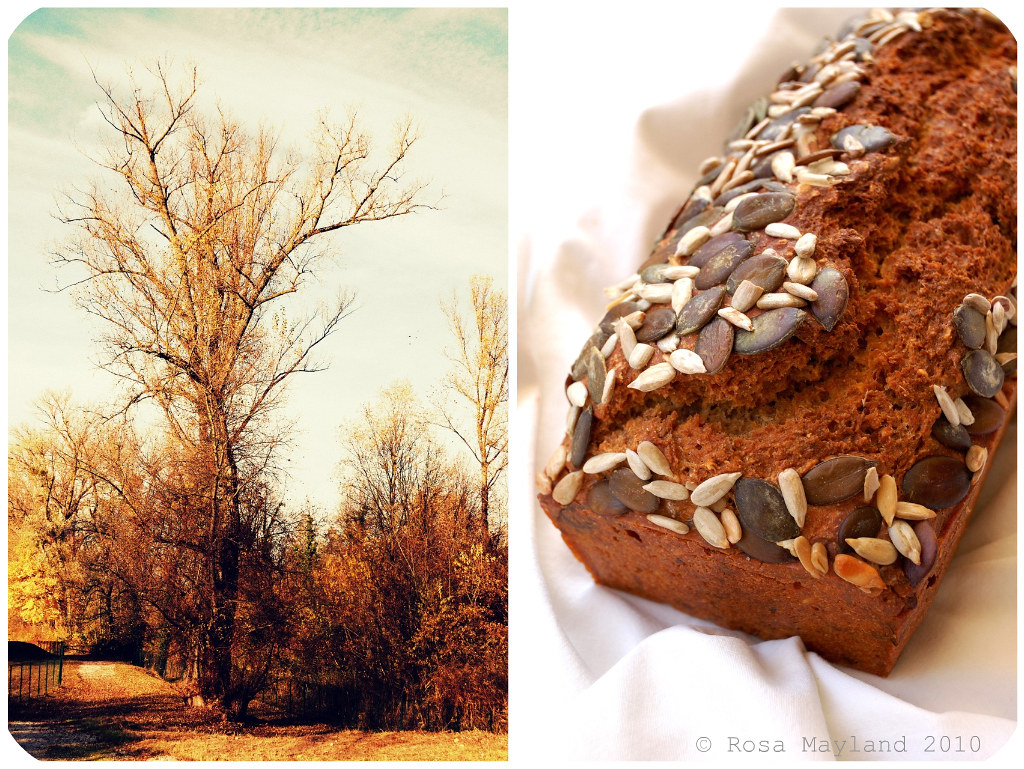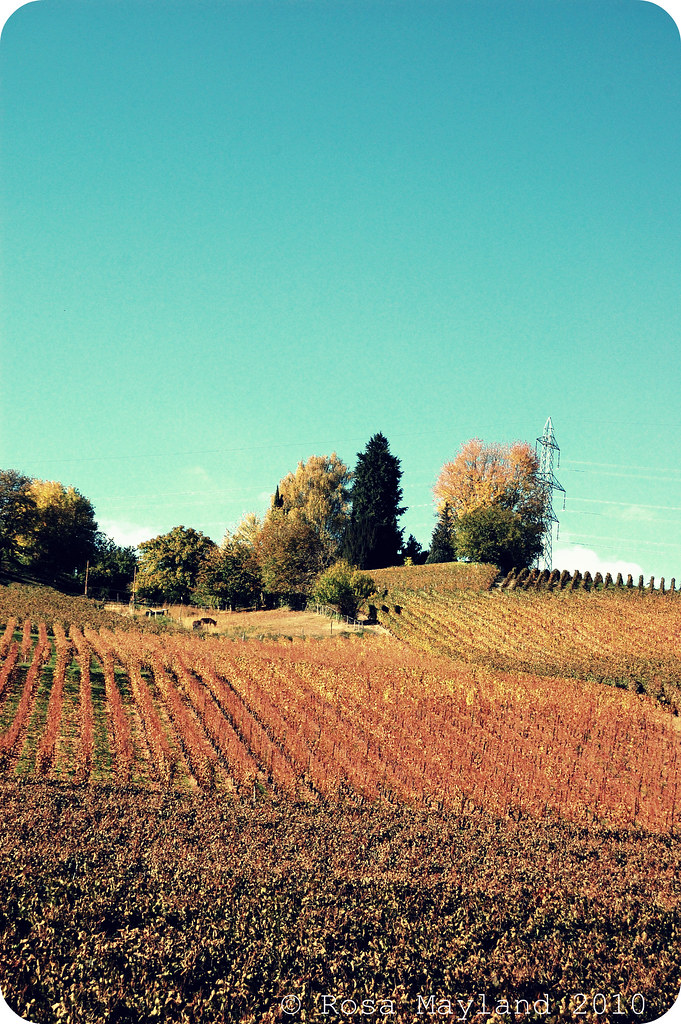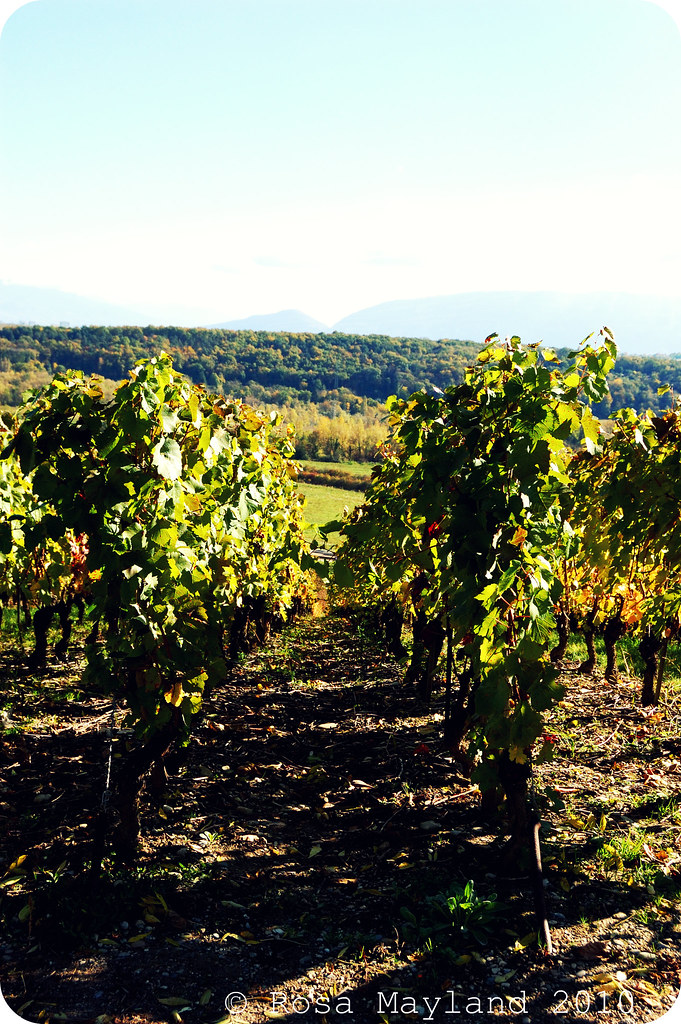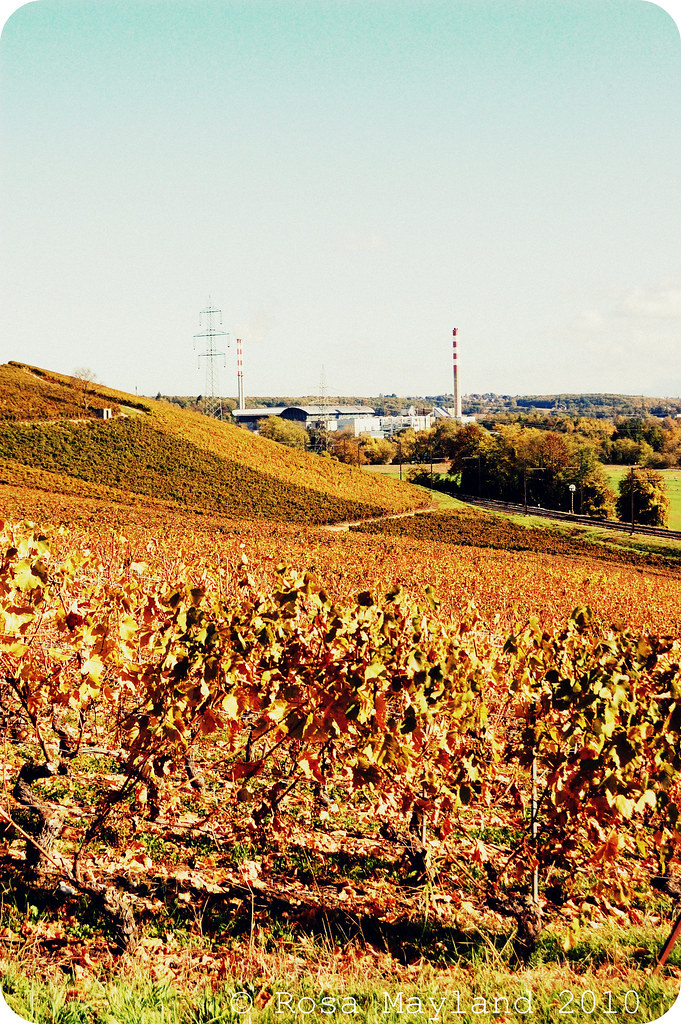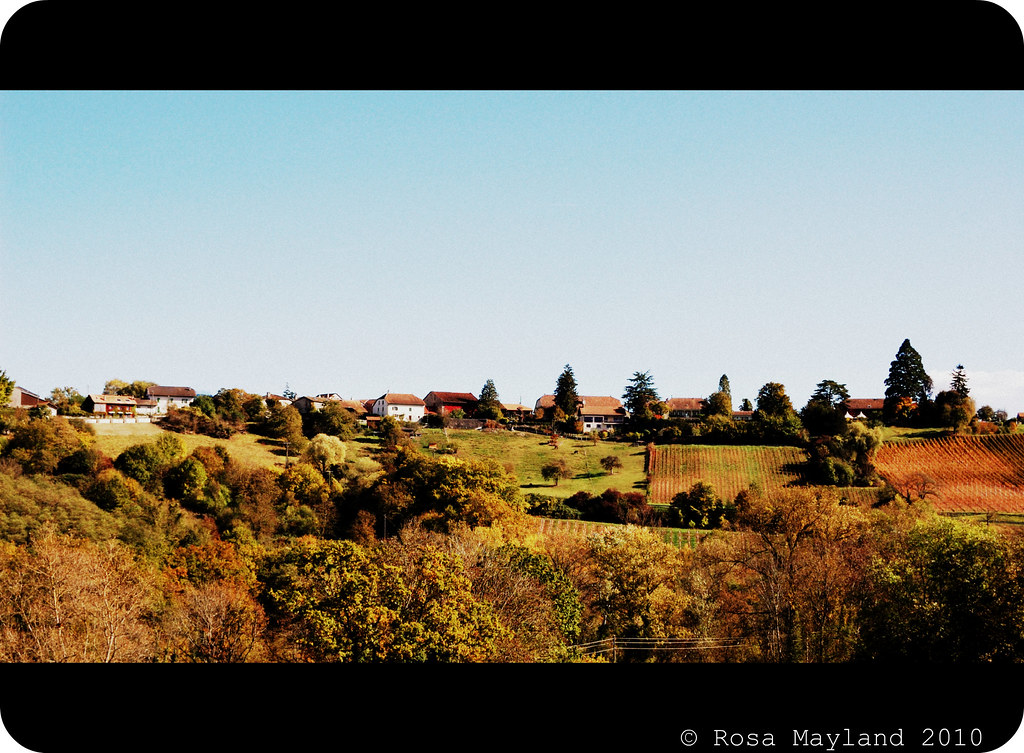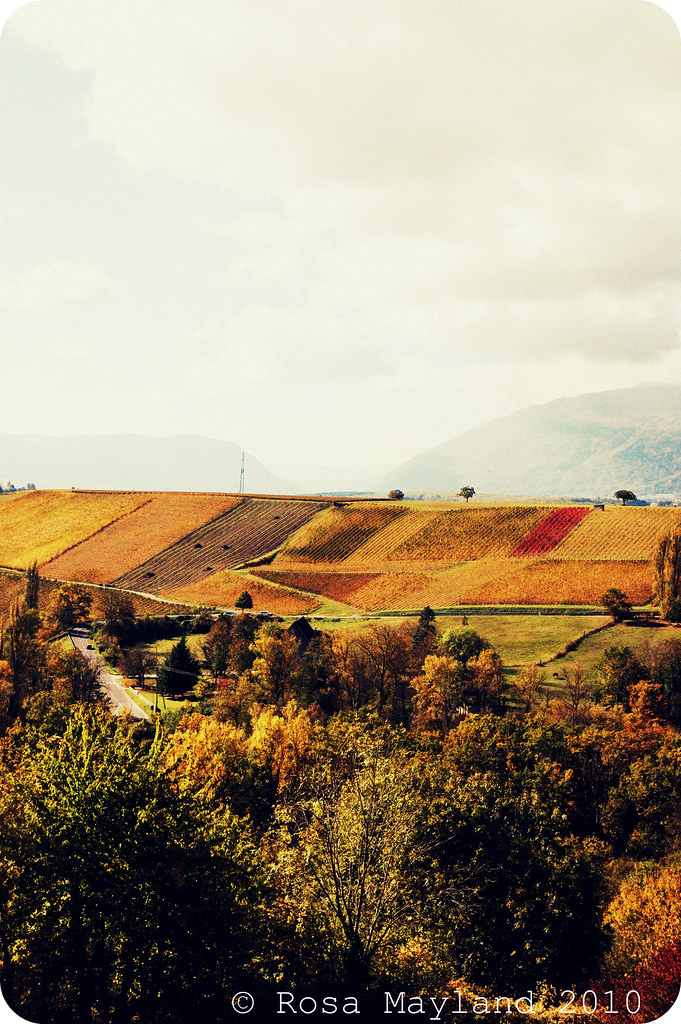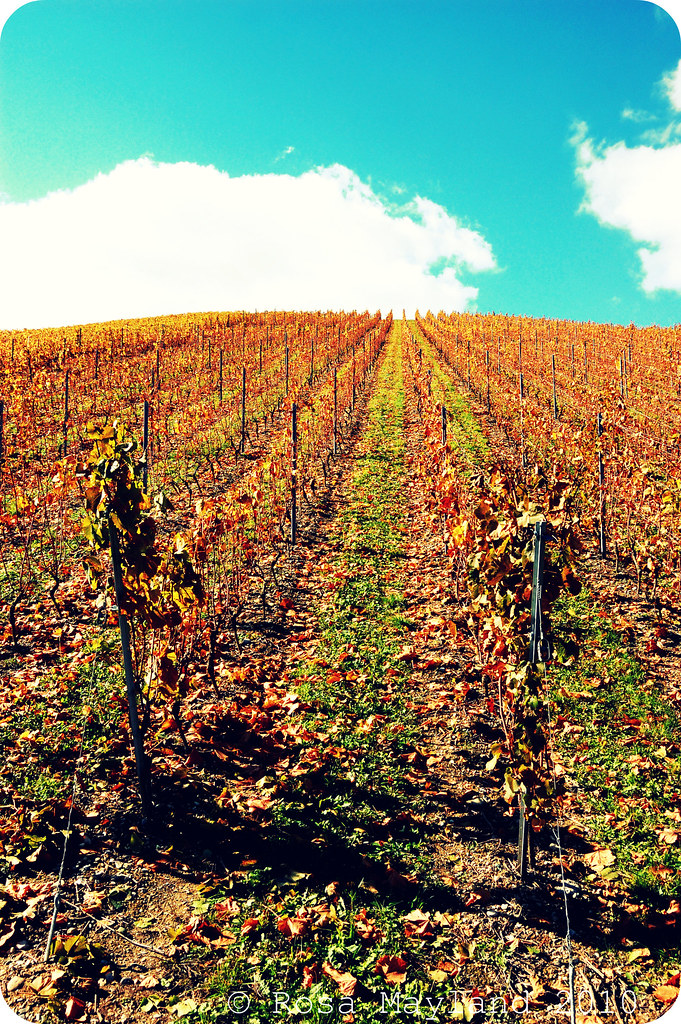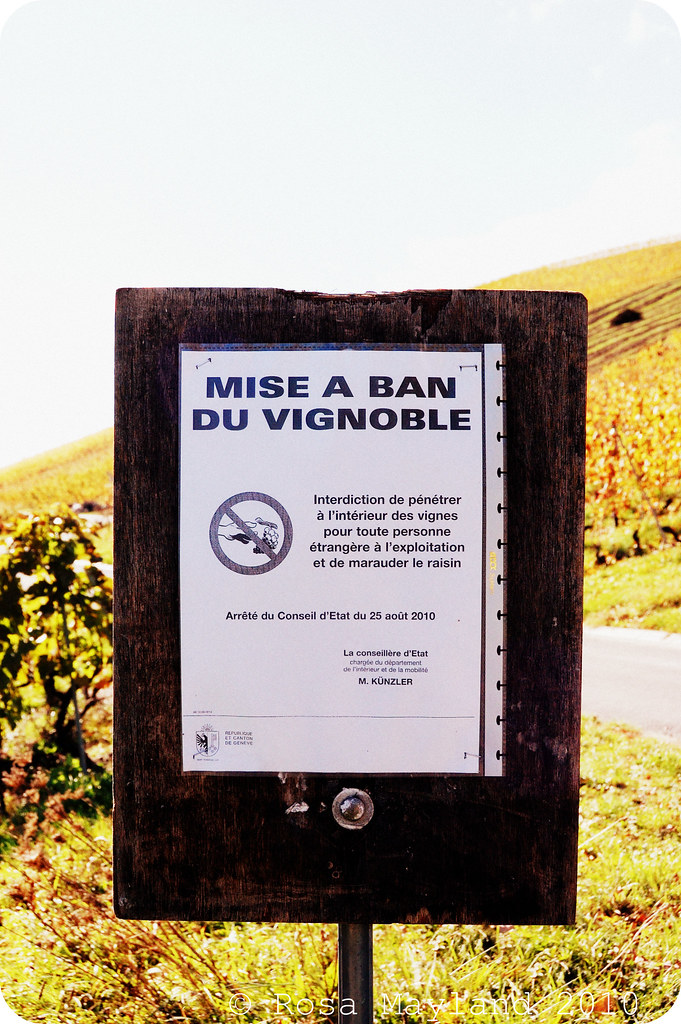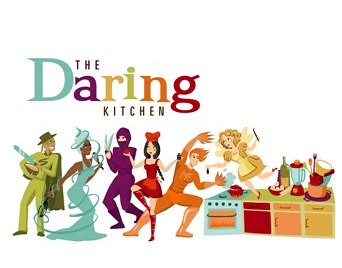
As incredible as it sounds, the end of November is already here. Another month has passed and yet another Daring Bakers’ challenge has been made. Now it's time to let the whole world admire our creations...
The 2010 November Daring Bakers’ challenge was hosted by Simona of "Briciole" who chose to challenge Daring Bakers’ to make "Pasta Frolla" for a "Crostata". She used her own experience as a source, as well as information from Pellegrino Artusi’s "Science In The Kitchen And The Art Of Eating Well".
When I learnt that we were going to make a "Crostata", an Italian baked dessert tart, and that we were free to fill it in whichever way we wanted I was really excited and was looking froward to play the wizard in the kitchen. After some thinking and research, I came up with a marvelous idea. I was going to bake an "Engadiner Crostata", a tart lined with "Pasta Frolla" (sweet Italian shortcrust pastry) and garnished with a caramelized walnut filling that is generally used when preparing the traditional "Engadiner Nusstorte".
"Engadiner Nusstorte" (also called "Bündner Nusstorte") is a Swiss walnut and toffee pie from Engadin in Graubünden with a two-piece sweet crust (a little similar to the American "Pecan Pie"). It is my very favorite dish from my childhood and it's still something I cannot think about without drooling uncontrollably or eating without reaching the seventh sky. As far as I can remember I have always cherished that divine speciality.
My adulation for this mouthwatering pastry can be traced back to my early years (between age 4-10). When I was a kid, although I was more used to go out for 35kms hikes in the Jura mountains during the weekend, my parents also liked taking peaceful walks around Geneva and it's surroundings (lakeside, botanical garden & Pregny Chambésy). On such occasions we stopped at the Château De Pentes restaurant which is situated in a big park with an old manor house - originally a 14th century fortified mansion. The place is idyllic as it has a plunging view over Lake Geneva and one can see the French Alps as well as the Mont Blanc when the weather is stunning - no wonder romantics such as Mary Shelly or Lord Byron liked that place. There we had a drink and enjoyed a rewarding sugary treat. Along with my hot Ovomaltine I never failed to order a slice of the most luscious "Engadiner Nusstorte". Eating it felt like paradize and nothing could have made me more happy. It was probably one of my very first and most unforgettable foodie memories ever.
Unfortunately, as I grew up that habit faded away and then we stopped going there for Saturday teatime. As all good things have an end, that meant no more homemade "Engadiner Nusstorte" for me. Of course I could still buy it from our local Migros supermarket, but as much as it was enjoyable there was no way it was comparable to the one of my youth. And even if my mother cooked and baked a lot that is one tart she has never made. So, I had to wait until I met my "Bündner" (from canton Graubünden in Swiss Germany) boyfriend to finally have access to the authentic goodie again...
I may be quite an audacious baker and cook, yet until today I have never trusted myself to tackle that confection as I had the impression that the filling was kind of tricky to prepare. As usual, I was terribly wrong and underestimated my skills. It was extremely painless to make and totally straightforward (at the condition that you feel comfortable while working with caramel). It's texture and flavor was a complete success as I didn't fail to recreate the "real thing". It was just as it should be, no more no less.
Putting together the pastry was plain simple and not fussy at all, but the act of rolling it was shear displeasure and an absolute calamity. No matter how cold it was or how much I had floured the parchment paper the goddamn pastry inevitably HAD to stick to it and behave in a very uncooperative manner. Darn I hate making "Pasta Frolla" for that reason! Anyway, I was able to place it in the pan and make it look presentable. It did get slightly torn in the process but I repaired the damage done while unsticking it from the baking sheet and then everything was ok.
My "Engadiner Crostata" ended up looking flawlessly beautiful and made me feel very proud of myself. The buttery and flaky sweet shortcrust pastry combines perfectly together with the strongly caramelly, delightfully walnutty and moreish filling. That pairing is so scrumptious and sinfully good that it'll make you grow devil horns!
~Engadiner Crostata ~
Preparation time:
The following times are approximate, as the time depends on your dexterity to cut the butter and work the dough (which should not be overworked) and your familiarity with the rolling pin.
. Preparing pasta frolla with a food processor takes 10-15 minutes
. Allow the pasta frolla to chill thoroughly - two hours minimum
. Making crostata with pastry cream requires the time to make the filling
Equipment required:
. Bowls, as needed
. Fork
. Knife
. Bench (or pastry) scraper
. Rolling pin
. Pastry brush
. 9 or 9.5-inch (23-24 cm) fluted round tart pan with removable bottom, about 1 inch (2.5 cm) high. (Note: If you don't have a tart pan with a removable bottom, don’t worry! You can make crostata using a 9-inch cake pan or even a 9-inch pie plate.).
PASTA FROLLA
Ingredients:
1/2 Cup minus
1 tablespoon (105ml, 100g, 3 ½ oz) Superfine sugar (see Note 1) or a scant 3/4 Cup (180ml, 90g, 3 oz) of Powdered sugar
1 and 3/4 Cup (420ml, 235g, 8 1/4 oz) Unbleached all-purpose flour
A Pinch of salt
1 Stick (8 tablespoons/4 oz./115g) Cold unsalted butter, cut into small pieces
1 Tsp Pure vanilla paste
1 Large egg + 1 Large egg yolk, lightly beaten in a small bowl
Method For The "Dough":
1. Put sugar, flour, salt, and lemon zest in the food processor and pulse a few times to mix.
2. Add butter and pulse a few times, until the mixture has the consistency of coarse meal.
3. Empty food processor's bowl onto your work surface.
4. Make a well in the center of the mounded flour and butter mixture and pour the beaten eggs into it (reserve about a teaspoon of the egg mixture for glazing purposes later on – place in the refrigerator, covered, until ready to use).
5. Use a fork to incorporate the liquid into the solid ingredients, and then use your fingertips.
6. Knead lightly just until the dough comes together into a ball.
7. Shape the dough into a flat disk and wrap in plastic wrap. Place the dough in the refrigerator and chill for at least two hours (You can refrigerate the dough overnight).
WALNUT FILLING
Ingredients:
250g Castor sugar
330ml Double cream
4 Tbs Honey
300g Shelled walnuts, chopped coarsely
A pinch salt
Method:
1. In a clean pan, add the sugar and heat it. When the sugar is starting to melt stir constantly with a whisk or wooden spoon. When all sugar crystals have melted and the liquid is a medium-dark amber color, then your caramel is ready.
2. Add the nuts and honey, stir and incorporate the cream.
3. Let the mixture simmer for a few minutes (5-8 minutes) and remove from the heat.
4. Let cool the filling.
PUTTING THE TART TOGETHER
Method:
1. Heat the oven to 350ºF (180ºC/gas mark 4).
2. Take the pasta frolla out of the fridge, unwrap it and cut away 1/4 of the dough. Reserve this dough to make the lattice top of the crostata. Refrigerate this dough while you work on the tart base.
3. To help roll the crostata dough, keep the dough on top of the plastic wrap that you had it wrapped in. This can help rolling the dough and can also help when transferring the dough to your pan. You can also use parchment paper for this. However, you can also roll the dough directly on a work surface if you prefer. Lightly dust the top of the dough and your work surface (if you’re rolling directly on a work surface) with flour. Keep some flour handy to dust the dough as you go alon g. If the dough is very firm, start by pressing the dough with the rolling pin from the middle to each end, moving the rolling pin by a pin's width each time; turn the dough 180 degrees and repeat; when it softens, start rolling. Roll the dough into a circle about 1/8th inch (3 mm) thick.
4. If you used the plastic wrap or parchment paper as rolling surface, flip dough over the pan, centering it, and delicately press it all around so the corners are well covered. Peel away the plastic wrap. Trim the excess dough hanging over the edges of the pan. Press the remaining dough around the border into the sides of the pan making sure the border is an even thickness all the way around.
5. Prick the bottom of the dough with a fork in several places. Take out of the fridge the reserved pasta frolla you had cut away earlier. Roll it with your pin and cut into strips or use cookie cutters to make small shapes (this is not traditional, but it looks cute); or roll with your hands into ropes.6. Cover the bottom of the crostata crust evenly with the walnut filling.
7. Use the prepared strips or rolls of dough to make a lattice over the surface, or decorate with the cut shapes.
8. Brush the border and strips of dough with the reserved beaten eggs. You can add a drop or two of water to the beaten eggs if you don’t have enough liquid.
9. Put the tart in the oven and bake for 30 minutes. After 35 minutes, check the tart, and continue baking until the pastry is of a nice golden hue and the filling looks set. (Note: Every oven is different).
10. When done, remove the tart from the oven and let cool. If you have used a tart pan with a removable bottom, then release the tart base from the fluted tart ring. Make sure the tart is completely cool before slicing and serving.
~~~~~~~~~~~~~~~~~~~~~~
Etant donné que la recette est un peu longue, je n'ai malheureusement pas pu faire une traduction française de ce billet et je m'en excuse auprès de tous mes amis lecteurs et blogueurs francophones!
C'est pourquoi je vous suggère de vous rendre sur le blog mentionné ci-desso us. Vous y trouverez cette recette en version française.
Vous trouverez la recette pour la "Garniture Aux Noix" ici (sans oublier d'utiliser 250g de sucre cristallisé, 300g de noix, 330ml de Crème double, 4 CS de miel liquide et une pincée de sel).
Recette pour la "Pasta Frolla" sur les deux blogs canadiens suivants:
Chez Isa de "Les Gourmandises d'Isa" (Canada)
Chez Vibi de "La Casserole Carrée" (Canada)
